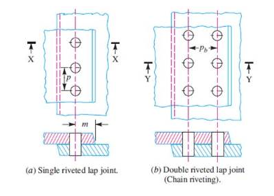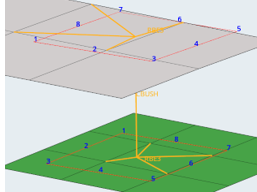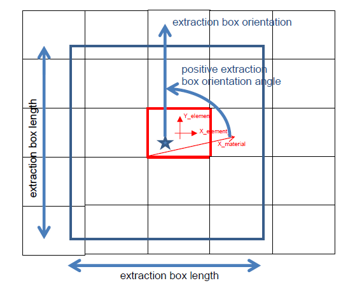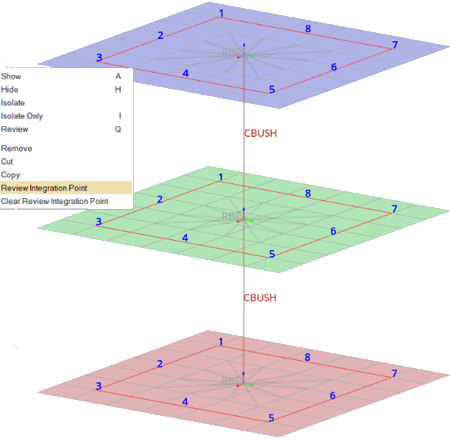Rivet Certification

Figure 1. Lap Joint Geometry

Figure 2. FE Idealized Model to Extract Forces and Fluxes
The Mesh Independent/Mesh Dependent options act as an up-front filter on selection before absorb APIs. The later finds in the remaining selection the rivets as an ordered collection of pierced shells and 1D elements (for body). There can be a long chain of multi-layers (more than two shells) resulting in double shear plates. The body must be made of a single (non-zero length) 1D element to be recognized.
Structural Properties
The stuctural property of config rivet has a single data name to store rivet diameter. In Auto DDP, the Aborb FE option is only valid for CFAST formulation. The tool "drills down" to PFAST properties assigned to CFAST elements used by a design point. The PFAST diameters are retrieved and as soon as all diameters are the same, a structural property entity is created with the same diameter value and assigned to the design point automatically.
JointLoad Method
The rivet config has an internal method called JointLoad. This method extracts rivet forces/fluxes and moments on each and every layer (pierced shells) of a rivet and populates a table with all of the extracted data. It does not compute margin of safety, therefore it cannot be contoured.
On each pierced shell, the shell’s material system is extracted and an extraction area is created to compute fluxes and moments. The size of the extraction area is driven by the rivet diameter and material scale factor.
Integration is used along each of the edges of the box. The default is three per edge. Points are where 2D element forces are interpolated. Interpolated forces are then averaged per side to compute total/bypass fluxes.
- 0: Rivet max tension is extracted from raw 1D axial force (default)
- 1: Rivet max tension is extracted from the Z component in the shell’s material system
- 1: Compute DLS ratios
- 0: Do not evaluate DLS ratios

Figure 3. . Box length=0.4*Size_scale*(D_scale*Diameter)

Figure 4. Review Extraction Areas per Plate